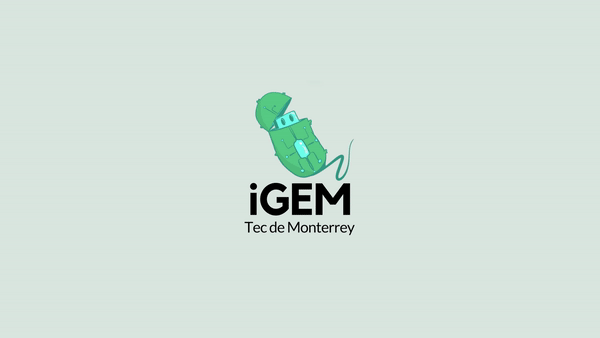| Line 121: | Line 121: | ||
Where <b>Cas1</b> refers to free Cas1 protein, <b>Cas2</b> to free Cas2 protein, <b>RT</b> to free Retrotranscriptase, <b>msr-msd</b> to free msr-msd RNA transcript, <b>CAS</b> to free Cas1-Cas2 protein complex, <b>M***</b> to RT bound by msr-msd RNA transcript, <b>MSD***</b> to free retrotranscribed target DNA sequence, <b>X</b> to Cas1-Cas2 protein complex bound to target DNA sequence, and <b>I***</b> to the amount of insertions made to the bacteria’s genome. This first model consisted of a simple linear differential equations system. | Where <b>Cas1</b> refers to free Cas1 protein, <b>Cas2</b> to free Cas2 protein, <b>RT</b> to free Retrotranscriptase, <b>msr-msd</b> to free msr-msd RNA transcript, <b>CAS</b> to free Cas1-Cas2 protein complex, <b>M***</b> to RT bound by msr-msd RNA transcript, <b>MSD***</b> to free retrotranscribed target DNA sequence, <b>X</b> to Cas1-Cas2 protein complex bound to target DNA sequence, and <b>I***</b> to the amount of insertions made to the bacteria’s genome. This first model consisted of a simple linear differential equations system. | ||
| + | $$\dv{[Cas1]}{t}=\frac{v_{I}[IPTG]}{C_{I}+[IPTG]}-\gamma_I[Cas1] - k_X[CasI]^4[CasII]^2 + k_{-X}[X]$$ \vspace{0.3cm} | ||
The initial principle of the system is the expression of three proteins (Cas1, Cas2, and a Retrotranscriptase) and the msr-msd RNA transcript, regulated by an inducible promoter. As such, the Hill equation was implemented to describe said regulated expression, as a function of the concentration of an inductor. A separate term, for basal protein degradation remained. Additionally, enzymatic processes, such as protein complex formation, substrate binding, or enzymatic reactions, are left described by mass-action law. Equations *** to *** correspond to each protein, substrate, and enzymatic complex involved in the E. coding system. <br> | The initial principle of the system is the expression of three proteins (Cas1, Cas2, and a Retrotranscriptase) and the msr-msd RNA transcript, regulated by an inducible promoter. As such, the Hill equation was implemented to describe said regulated expression, as a function of the concentration of an inductor. A separate term, for basal protein degradation remained. Additionally, enzymatic processes, such as protein complex formation, substrate binding, or enzymatic reactions, are left described by mass-action law. Equations *** to *** correspond to each protein, substrate, and enzymatic complex involved in the E. coding system. <br> | ||
<br> | <br> | ||
Revision as of 21:18, 16 October 2018

Test 1
Test 2
The role of the mathematical model is explaining this and discovering particularities about the specifics of information, so that processes involving information are made better. Specifically, answering questions as why, how, when, what, regarding our biological system is our objective.
Module 1 & Module 2
Protein and target DNA production
In beginning with a mathematical description of the E. coding system, the biomolecular processes taking place in the system were expressed as reversible biochemical reactions governed by mass-action law kinetics, as conveyed in Figure ***.

Equation 1
Equation 2
Equation 3
Equation 4
Equation 5
Equation 6
Equation 7
Through steady-state assumptions, the system of equations was further reduced: = 0 Substituting, Equation *** in Equation ***, and Equation *** in Equation ***, a single expression for the amount of target DNA sequence is defined as: Equation ***
Module 3
Genomic Spacer acquisition


